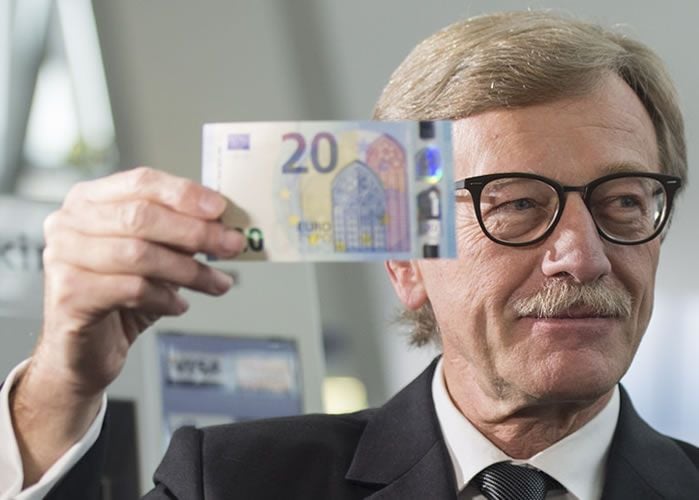EUR/USD Trading Strategies: Lloyds, Danske Bank, UOB and Bank of Tokyo Mitsubishi
- Written by: Gary Howes
-
The EUR/USD exchange rate has made a convincing stab above the 1.12 threshold at the time of writing - what does this tell us about the outlook?
EUR/USD trades above 1.12 at the time of writing having overcome what was a notable level of resistance having been rejected here at the start of August.
The move comes ahead of a pretty heavy economic calendar schedule in the US so there will be plenty of info to help shape monetary policy expectations.
Next week we will get the July CPI report and the release of the minutes from the July FOMC meeting.
Nevertheless, most institutional analysts agree that further upside is possible in the current climate.
Here are some of their views.
Bank of Tokyo: Stability to Persist
Analyst Lee Hardman at Bank of Tokyo Mitsubishi set a relatively narrow three big-figure range with a neutral bias for EUR/USD last week, and he seea no reason really to change either for the week coming up.
“The overall risk is possibly that the markets strengthen the view that the Fed will indeed raise rates this year but we doubt to an extent that will result in any meaningful move lower for EUR/USD,” writes Hardman, in a note supplied us via institutional research providers eFXNews.
A good point made by Hardman is that the focus in the foreign exchange market is more on carry and hence if there is any move in FX in the week ahead may be more likely to come in higher yielding currencies versus the dollar that have moved more in recent weeks.
“EUR/USD stability may well persist through to full trading activities resuming in early September,” says Hardman.
Danske Markets: Stuck Above 1.10
Bond yields have moved slightly sideways over the past month despite improving risk sentiment.
Dovish central banks keep bonds bid and in Europe QE and a rising scarcity of bonds are driving the curves flatter.
“We expect this trend to continue,” say Danske Bank in their latest assessment of EUR/USD.
Recent Fed comments suggest a very cautious stance from the Fed and we continue to expect it to delay the next hike to next year, although the probability of a hike in December has gone up following the latest strong job reports.
“We have not seen the dip in EUR/USD we expected following the Brexit vote and it seems more likely now that we are stuck in a 1.10-1.14 range over the coming months,” say Danske.
In the medium term, Danske continue to see EUR/USD higher due to the same factors they have highlighted for a long time:
(a) The euro area-US current account differential is very high (hence flows favour the EUR)
(b) According to Danske's medium-term valuation models (MEVA) EUR/USD is fundamentally cheap.
UOB: Bullish, But Only if Above 1.1250.
Technicians at United Overseas Bank (UOB) in Singapore are only going to turn more bullish on the pair should a key resistance point be broken:
"The undertone for this pair is still viewed as positive and we continue to anticipate a stronger EUR in the next few days but only a clear break above 1.1250 would indicate that the start of a sustained up-move.
"On the downside, 1.1100 is acting as a major support and a breach of this level would suggest that the short-term upward pressure has eased."
Lloyds: Gains are Merely Corrective
Lloyds Bank's technical charting team have also observed the short-term range that exists in a well-defined channel between 1.0935 and 1.1240.
"Gains are still viewed as corrective, with a decline through 1.1125/00 needed to suggest a re-test of channel resistance is unlikely, and that we are heading back towards supports. Intra-day momentum has turned lower and complements this more bearish view, data willing," say Lloyds.
Longer term, analysts are becoming wary that 1.0450-1.17 range is developing as a “flag” consolidation ahead of a test of key long-term support in the 1.00-0.99 region.
"We are monitoring this for greater clarity and confidence in this view," say Lloyds.
Fundamentals
The Dollar has remained on the defensive following sluggish U.S. retail sales data from last week, this was unexpectedly flat in July as Americans reduced their purchases of clothing and other goods.
This restraint in consumer spending could reduce the likelihood of substantial economic growth in Q3.
"All eyes will be on the US macro diary for the coming days, with the release on Wednesday of the FOMC minutes from their July policy meeting warranting particular attention," notes Jake Spark at Western Union.
No interest rate decision was made and while the Fed’s projections indicate the likelihood of rate rises this year there was no clear signal from the July FOMC statement that a rate hike was looming.

